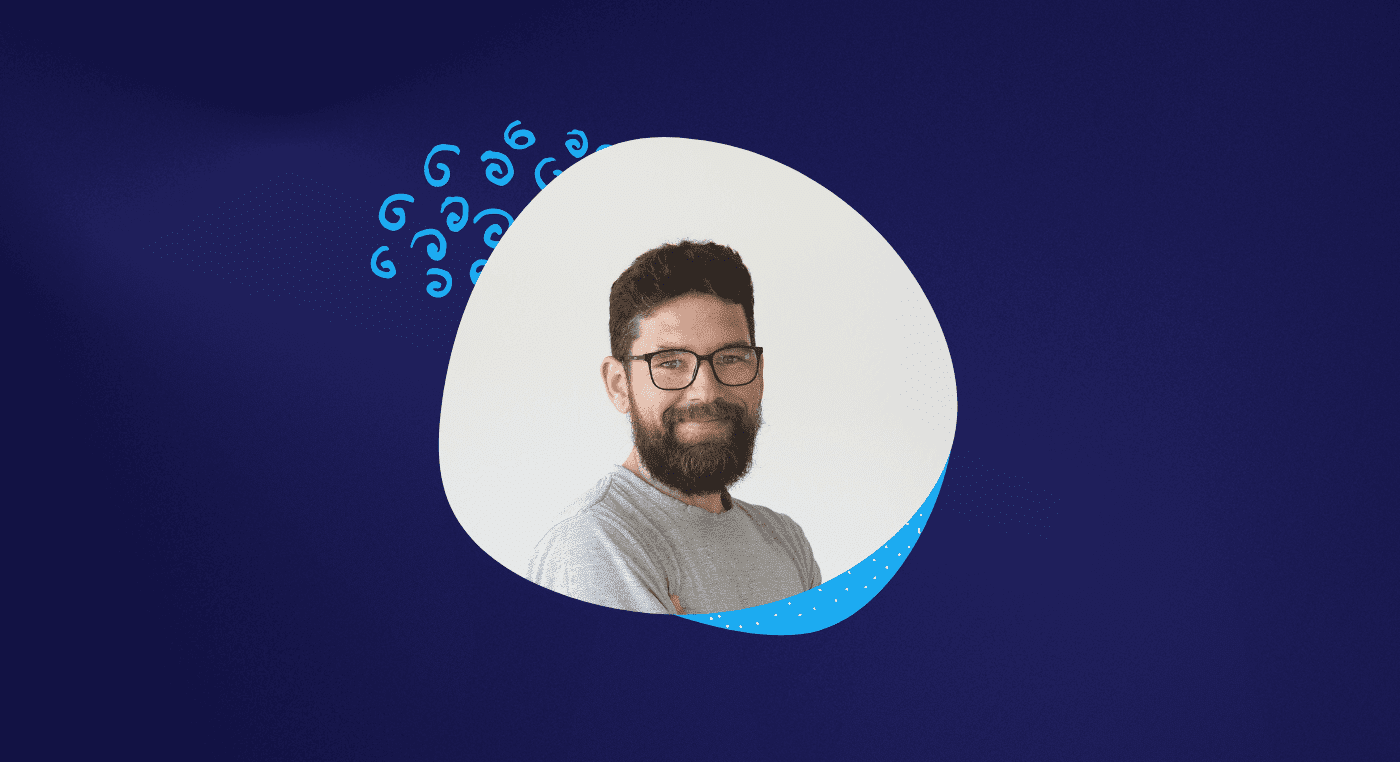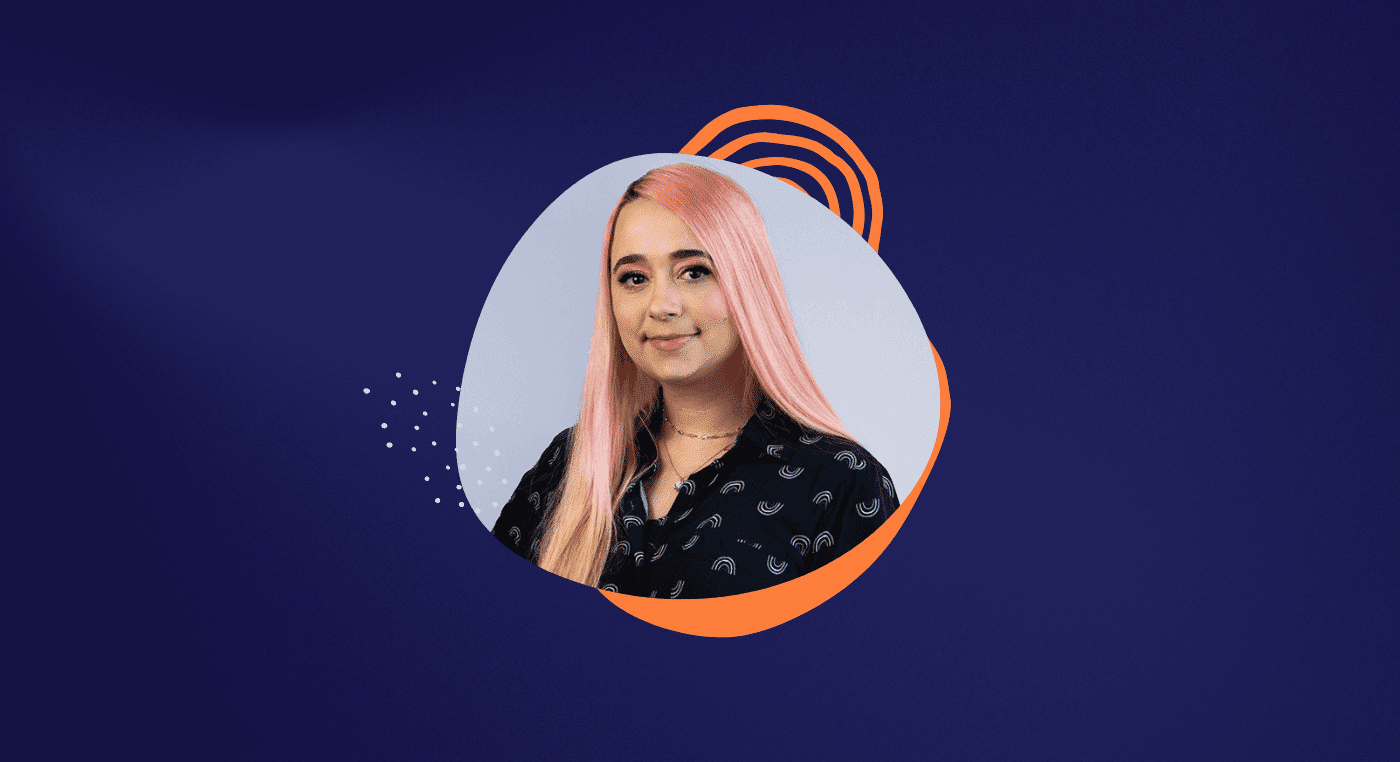Joyce talked to us about her career transition, from a simple workshop she attended, to her studies at the Mastering Interface Design program. Which led to her being hired by Wunderman Brazil as a UX Designer.
In addition, she shares with us the differences she observed between the two professions, and emphasizes the importance of effective networking, which can be just as crucial as having a strong portfolio when it comes to securing job opportunities.
Reading tip: LinkedIn for Designers: Tips to Boost Your Profile
What was your background before switching to UX?
I have a degree in advertising, and working in an agency has always been my dream. In my first college semester, I got an Art Director position at an agency.
As it's quite common in advertising, I worked for several agencies over time, but always as an Art Director. I spent 8 years getting to know this field in-depth, and little by little, I realized that I wanted something more.
What were your attributions as an Art Director?
The Art Director, basically, is the person who needs to generate ideas. We get the briefing from the client, which already has all the information, and we need to come up with a creative way to communicate this idea or campaign. Of course, it involves a lot of execution, but also ideation.
In theory, the job description is this. The Art Director is responsible for creating ideas.
But in practice, due to tight deadlines, we end up being more like "problem solvers" within the communication that the client already does.
Usually, there is not enough time to create something truly innovative, and as a result, the creative aspect tends to be sidelined.

Reading Tip: 5 Soft Skills to Make a Difference as a Designer
How did you manage to pivot from Art Director to UX Designer?
About 3 years ago, I enrolled in a usability workshop without any intention of changing careers. But in the end, I loved the subject and the UX concepts.
Towards the end of last year, I experienced a sense of discouragement and an urge for change. I reflected on that workshop and began exploring opportunities where I could learn more about the subject.
While searching the internet, I found Aela's website. I read the whole landing page and thought it was too good to be true! I had always been afraid to take online courses.
But I summoned the courage and signed up for the MID program; after all, there was a money-back guarantee if I didn't like the course in the first 60 days.
It turned out that right in the first class, I fell in love with the subject and the course. I realized that I had made the right decision. Now I was sure that I really wanted to change fields. I began to study hard. I researched several materials and did all the exercises.
While strategizing my career transition, a colleague informed me of an available position for a UX Designer at Wunderman, Brazil – an advertising agency where I had previously worked.
Familiar with the work culture and personnel, I saw an opportunity to merge business with pleasure and decided to apply for the recruitment process.
I had an interview and created a portfolio overnight with three projects plus a complete study case using the MID exercises. I presented the portfolio and succeeded in the process!
Reading Tip: Redesign: Are You Sure About It?
Do you think your networking was a key factor in landing this position?
Absolutely. Of course, without a consistent portfolio for the position, it wouldn't do any good to know people.
But for sure, the fact that people already knew how I work and my profile helped me a lot. Networking is key, for sure.
What differences did you feel between working as an Art Director and a UX Designer?
The biggest difference, for me, is that UX is a more strategic area. While Art Direction has a lot to do with creativity, UX has more to do with research, facts, data, and people.
It's not enough to have an idea if it doesn't work. It's no use setting up a beautiful website if it's not functional for the public.

Reading Tip: Does UX Design Limit Creativity?
How is your routine as a UX Designer at Wunderman?
Here at Wunderman, the CX (Consumer Experience) group is separate from the creative department, and within this group, there are two teams: one for UX and the other for UI design.
And the big difference I feel here, compared to other agencies, is that we place a high value on both UX and UI. Our CX group, just so you can have an idea, has over 20 people.
In terms of the day-to-day workflow, the UX Designer is typically the first to get involved in any project that requires a development process.
We receive the briefing with all the relevant information and use it to begin designing the pages. Once the initial designs are complete, we send them for the necessary approvals, and upon approval the project advances to the UI team.

Sometimes approvals with clients can be a bit difficult. How is this relationship between UX and clients?
The relationship with clients has been pretty good.
Currently, my largest client has its own UX department, meaning that each change request comes with greater authority and leads to productive collaborative work.
The two teams (Wunderman and client) work and design together, so there's less friction and frustration.
Reading Tip: UX Theatre: Are You Sure It’s UX Design?
What would you say to someone who is in the process of applying for UX Design roles?
I can't really say what the formal application process is like since mine was through the networking I already had there.
But I think it is essential that the person makes it clear that they are interested and know what they are talking about.
You can't just jump into the field.
You must create a portfolio, study the terms and know the jargon to show that you understand the subject during the interviews.

What is your work team like at Wunderman?
I had a warm welcome, and even though I had worked here before, I didn't know anyone on the UX team.
So it was like joining a new company. The team was very receptive and helped me a lot with software, plugins, etc.
But even with this help, I think it's also important to go after things, to be interested in learning new things and discovering the ways yourself.
Do you think knowing how to code has any advantages for a Designer?
Here at Wunderman, it's totally separated. Maybe knowing the code can help you when you think about the design, but I don't think it helps much in the day-to-day work routine.
Reading Tip: Landing Page: Optimize Conversion With UX Principles
What can you say about the MID program for people interested in joining it?
About joining the MID: DO IT!
The methodology is very good, it's a program that has a lot of practice, and this makes a lot of difference.
When you watch a video, you think you understand and know how to do what was taught. But when you really sit down to do it, you realize the hardships.
And this forces you to look at the material again and research other sources, videos, etc.
The team is always very accessible to answer questions. The student community is also very nice, this helps a lot.
I can only thank them, and I'm just starting, and I still have a long way to go.
What are your plans for the future?
I am taking the first step towards this new career, so I plan to study a lot and learn by doing the things that can only be learned by being in the workplace on a daily basis.
In the future, the idea is to leave the country for sure. I look at the job openings you post, and there are a lot of jobs out there. I have always wanted to live abroad, but never saw a chance to work in advertising.
Now that I work with UX, I find this idea more achievable.
What advice do you have for those who want to pivot to UX/UI?
Whether you work in a related field or not, my advice is to study hard! Study a lot! It may sound like a cliché answer, but it is true. Learning is very important.
Go to events, search for material online, on YouTube, etc. You will find a lot of information because people who work with this are passionate and willing to share what they know.







